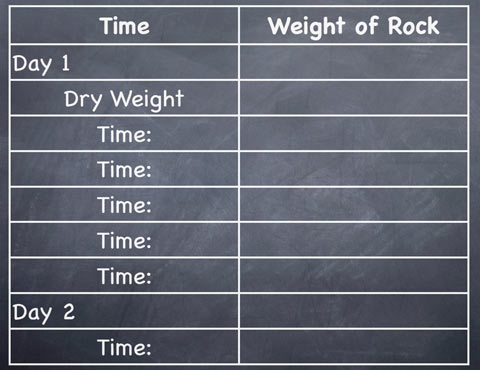Solid as a Rock?
We often think of rocks as completely solid, but the truth is, rocks are natural sponges! They can absorb liquid like the sponges we use in the kitchen. Don’t believe it? See for yourself!

What You Need
- A porous rock (a pumice stone — found at the pharmacy under "foot care" — will work well, but you can also use a brick or even a piece of chalk*)
- A tub of water large enough to put the whole rock into
- A scale or balance that can measure weight in units of grams or smaller
*Note that if you use a piece of chalk as your rock, you should decrease the time between weigh-ins to ~5 minutes, since the chalk will eventually fall apart in the water.
What to Do
Weigh your rock while completely dry and record the weight in a chart like this one:
Submerge the rock completely in the water and let it sit for about 30 minutes. Take the rock out and shake off all the excess water, then weigh it again and record your result.
Put the rock back in the water for an hour, then take it out and weigh it again. Do this a few more times over the next several hours. FInally, leave the rock in the water overnight and weigh it again in the morning.

You can track your rock's water absorption with a chart like this.
What's Going On?
You should find that the weight of the rock increases as it sits in the water. This is because the rock is absorbing the water, so it is becoming heavier. You should also find that after a certain amount of time in the water, the rock stops absorbing water and its weight remains constant. This means that the rock has absorbed as much water as it can and has reached full capacity!
Apply It!
Try doing this experiment with different kinds of rocks and compare how much water they absorb over time. See how well this works with other liquids - how much oil will the rock absorb?
- Aliya Merali














